Related Research Articles

Botrylloides is a genus of ascidian tunicates in the family Styelidae.
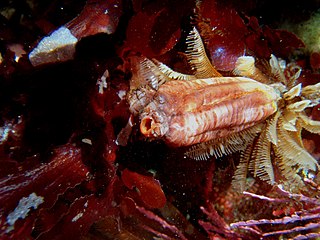
Styela is a genus of tunicates. Styela clava, an edible species, is known as an invasive species in some areas.

Halocynthia is a genus of ascidian tunicates in the family Pyuridae. Species such as H. roretzi are used as food.
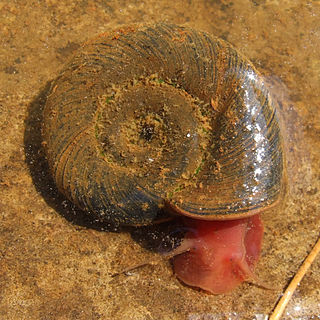
Planorbarius is a genus of air-breathing freshwater snails, aquatic pulmonate gastropod mollusks in the family Planorbidae, the ram's horn snails, or planorbids, which all have sinistral or left-coiling shells.

Xerocrassa is a genus of small, air-breathing land snails, terrestrial pulmonate gastropod molluscs in the subfamily Helicellinae of the family Geomitridae.

Stolidobranchia is an order of tunicates in the class Ascidiacea. The group includes both colonial and solitary animals. They are distinguished from other tunicates by the presence of folded pharyngeal baskets. This provides the etymology of their name: in ancient Greek, στολίς, ίδος means the "fold" of a cloth. Stolidobranchian sea squirts are also characterized by the complete absence of an abdomen. The abdominal organs of other tunicates are instead located to one side of the pharyngeal basket in this group.
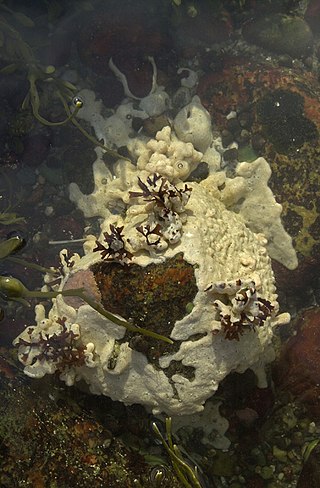
Aplousobranchia is an order of sea squirts in the class Ascidiacea, first described by Fernando Lahille in 1886. They are colonial animals, and are distinguished from other sea squirts by the presence of relatively simple pharyngeal baskets. This provides the etymology of their name: in ancient greek, ἁ.πλοος-ους (ha.ploos-ous) means "simple". The posterior part of the abdomen contains the heart and gonads, and is typically larger than in other sea squirts.
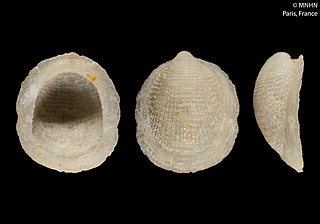
Plesiothyreus is a genus of very small sea snails or limpets, marine gastropod mollusks in the subfamily Phenacolepadinae of the family Phenacolepadidae.

Vermetus is a genus of sea snails, marine gastropod mollusks in the family Vermetidae, the worm snails or worm shells.
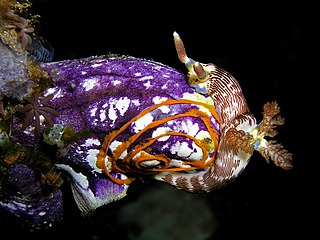
Polycarpa is a genus of ascidian tunicates in the family Styelidae.

Styelidae is a family of ascidian tunicates.
Eugyra are marine tunicates.
Alloeocarpa is a genus of ascidian tunicates in the family Styelidae.
Chorizocarpa is a genus of ascidian tunicates in the family Styelidae.
Diandrocarpa is a genus of ascidian tunicates in the family Styelidae.
Gynandrocarpa is a genus of ascidian tunicates in the family Styelidae.

Polyzoa is a genus of ascidian tunicates in the family Styelidae.

Symplegma is a genus of ascidian tunicates in the family Styelidae.
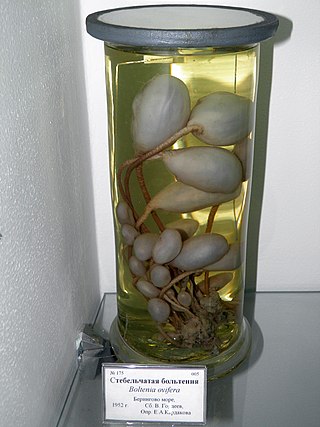
Boltenia is a genus of ascidian tunicates in the family Pyuridae.
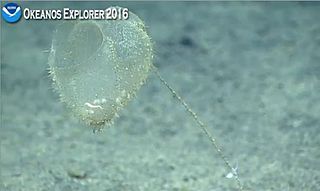
Culeolus is a genus of ascidian tunicates in the family Pyuridae.
References
- ↑ Sanamyan, K. (2015). Chorizocormus Herdman, 1886 . In: Shenkar, N.; Gittenberger, A.; Lambert, G.; Rius, M.; Moreira Da Rocha, R.; Swalla, B.J.; Turon, X. (2015) Ascidiacea World Database. Accessed through: World Register of Marine Species on 2015-12-23